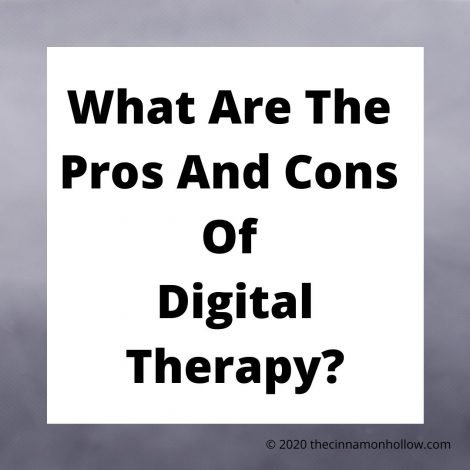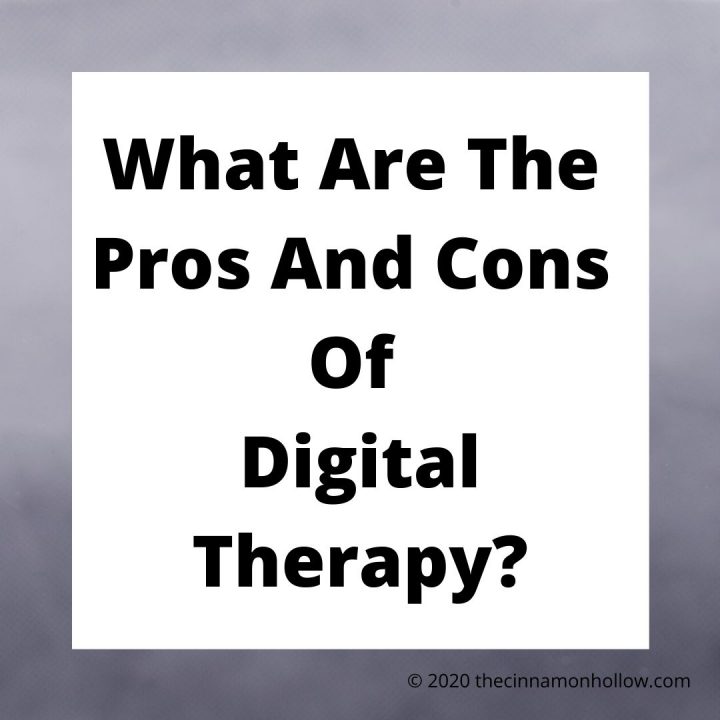With the recent outbreak of COVID-19 (coronavirus) quickly taking the world by storm, many organizations that traditionally operated in person have been forced to move their operations almost entirely online. In some cases, this outbreak accelerated some already existing trends while in others, it has already introduced systems that are entirely new.
The introduction of digital therapy (also known as online therapy, teletherapy, or remote therapy) began a few years ago but—due to the growing use of technology and the sudden need for social distancing—has already significantly grown throughout this young year.
If your teen is currently struggling with any mental health issues, you may be considering digital therapy, in-person therapy, or a possible combination of the two. Naturally, all types of therapy will have both pros and cons associated with them. Whether digital therapy is the right option for your teen will depend on the condition they are experiencing, its severity, and various other factors.
In this article, we will discuss the most important things to know about digital therapy, including its various benefits and drawbacks. By learning more about this innovative mental health practice, you can be in a better position to decide if digital therapy is right for your teen.

What is Digital Therapy?
Digital therapy, as the term suggests, is a form of therapy that is conducted entirely in a digital space. These therapy sessions are often conducted face-to-face via smartphones, but can also be done using a computer or various other smart devices.
A digital therapy session will often have a similar structure and content to an ordinary therapy session. The therapist, who will need to be a licensed psychiatrist or physician, will ask your teen basic questions about their life, help them learn more about themselves, and also administer various treatment modalities (including cognitive behavioral therapy, or CBT). Ideally, your teen will be able to continue their treatment over time with the same therapist. However, there are some digital programs that may offer therapy on an as-needed basis, which could result in exposure to different therapists.
What are the Benefits of Digital Therapy?
Over the past few years, digital therapy platforms have seen a considerable amount of growth. There are numerous benefits that this type of therapy can provide.
- Accessibility: many people are unable to access traditional therapy clinics, which could be due to a disability, where they live, or various other complications. Being able to reach a therapist with a smartphone means that more people can get the help they need.
- Health and Safety: sometimes going to a therapist isn’t safe, especially in light of the recent coronavirus outbreak. Even if your teen hasn’t exhibited any symptoms of the novel virus, minimizing personal contact is still a good idea.
- Comfort: many teens want therapy, but are uncomfortable with the sometimes intimidating settings that in-person therapy sessions can create. In addition to being in the privacy of their own home, your teen can also have access to creature comforts like their favorite foods, pets, and water.
- Flexibility: digital therapy is usually much more flexible because it can be done anywhere and, in some cases, at any time. Additionally, there is no need to worry about providing transportation or having to wait for an appointment.
- Affordability: when compared to in-person therapy, digital therapy is usually much more affordable, especially if your health insurance provides little to no mental healthcare.
Because of these reasons, and more, the digital therapy industry will likely double over the course of the next five years.
What are the Drawbacks of Digital Therapy?
Of course, with every innovative system, such as teletherapy, there will obviously be at least some drawbacks.
- Less Insurance Coverage: sadly, many insurance companies will only provide coverage for in-person therapy sessions, which can definitely create some financial complications. Also, some policies do not allow out-of-state services, which digital therapists very frequently will be.
- Confidentiality Concerns: while digital therapists can certainly be trusted, adding a digital medium between your teen and their therapist creates a layer of potential privacy risks that some people simply want to avoid.
- Commitment Challenges: in some ways, digital therapy may be too flexible, making it much easier for your teen to miss or skip their much-needed appointments.
- Limited Effectiveness: many people have claimed that teletherapy was very effective, but there is only so much help that a digital therapist can provide. Teens that are experiencing extreme mental health challenges, including suicide ideation, severe substance abuse disorders, and various others, are much more likely to benefit from other treatment options, such as teen residential treatment.
So while digital therapy can be incredibly beneficial, each of these drawbacks will need to be considered.
Is Digital Therapy an Effective Treatment Option for my Teen?
As suggested, teletherapy can be very effective in certain situations, especially with the outbreak of COVID-19 and the increased need for social distancing. However, whether this type of therapy is the “best” option for your teen will depend on many different factors.
- Current Condition: if your teen’s mental health challenges are severe, rather than moderate, they would likely be better off meeting with an in-person therapist. If that is not a viable option, however, digital therapy is at least better than no therapy at all.
- Personal Preferences: some people prefer to communicate from home while others prefer the personal touch that an in-person session can provide. Ask your teen which of these options they feel the most comfortable with.
- Coverage: before committing to either type of therapy, be sure to clarify what type of therapy your health insurance provider will cover.
Additionally, it is important to remember that these treatment options are not mutually exclusive. Meeting with a digital therapist weekly while also meeting with an in-person therapist monthly may help give your teen the best of both worlds.
Conclusion – What are the Pros and Cons of Digital Therapy
In the digital era, the proliferation of digital therapy is far from surprising. Digital therapists can provide accessible, affordable, and effective treatment for many individuals who are experiencing mental health challenges. While this treatment option won’t always be what’s best for everyone, it is a valid form of treatment that is certainly worth looking into.
Written By: Colleen Burton, MA






